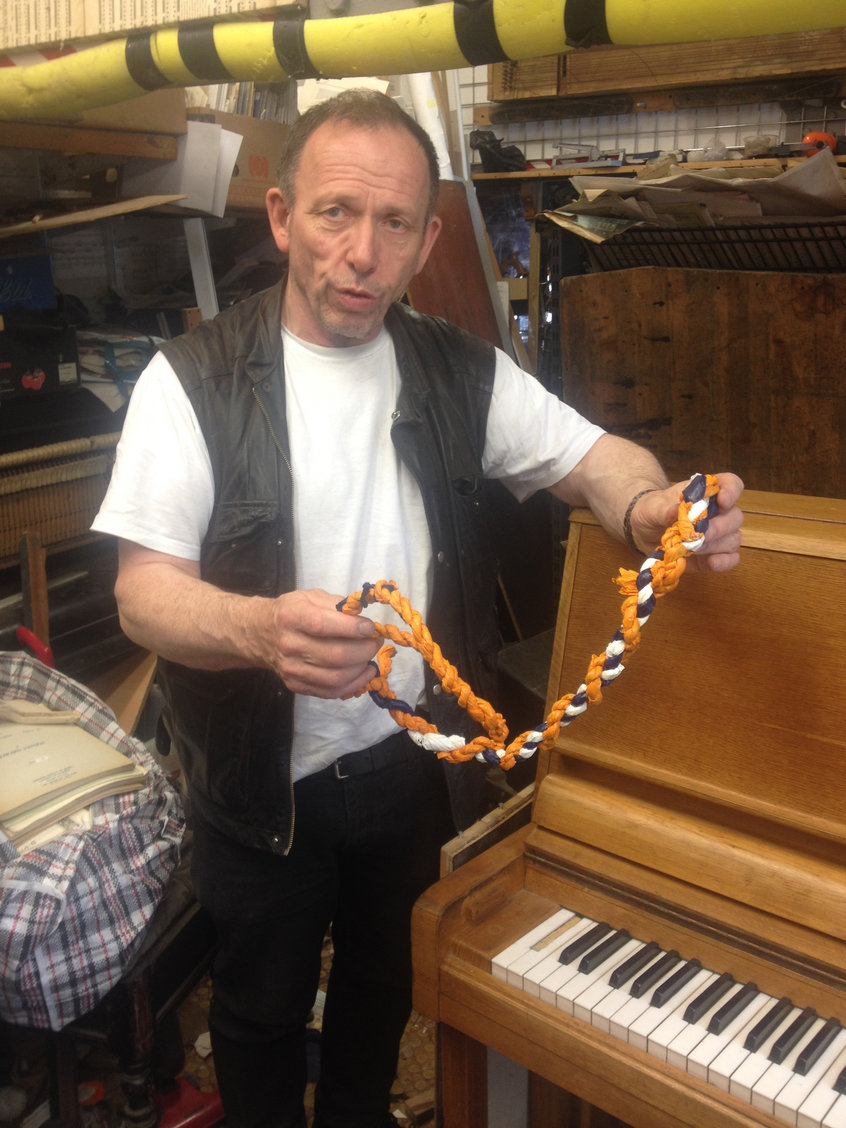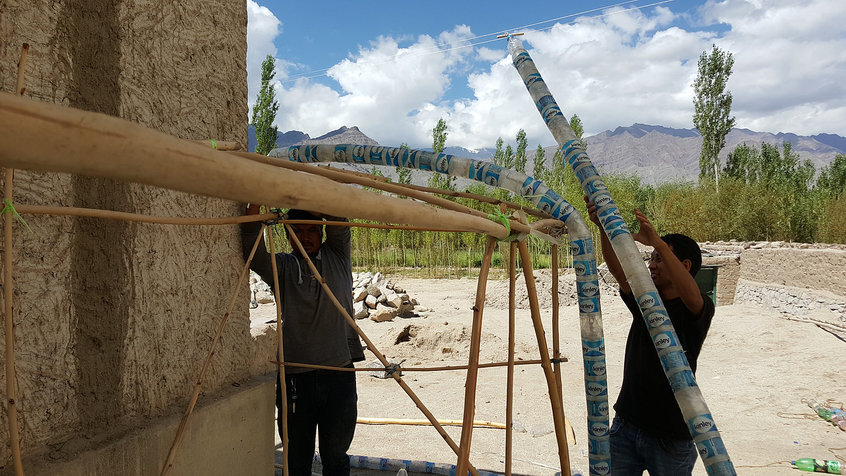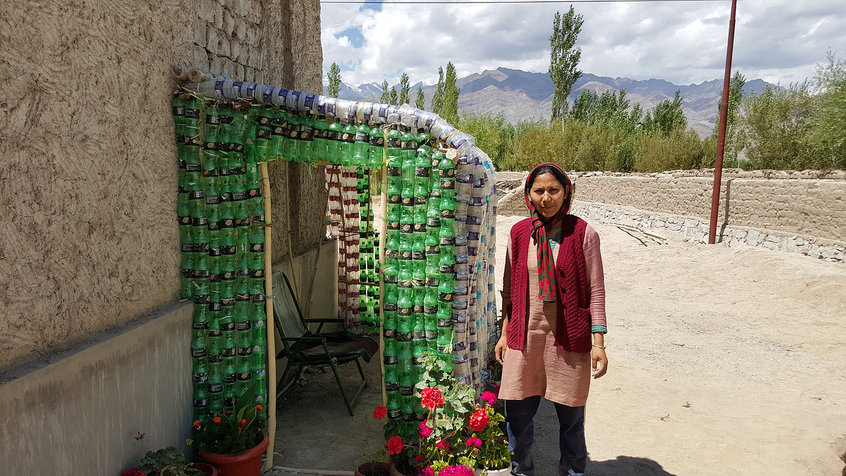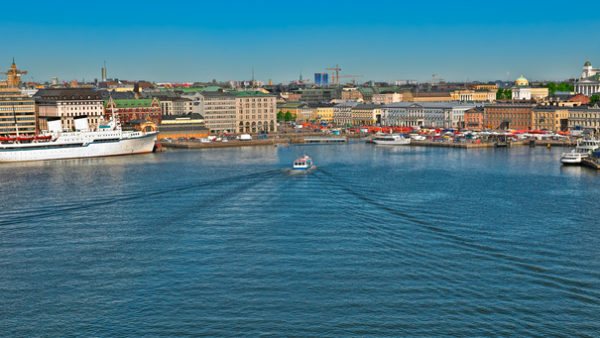Desmond Gentle runs a shop in London’s Camden Lock market for rescued and refurbished pianos. So, when a music teacher called in to take a look at his stock back in 2014, he was pleased to discover that she was very much interested in making a purchase. There was just one catch: it would have to be delivered – to a village in the Himalayas.
This might have been a problem given the inherent unportability of the piano, even in its upright form, however Gentle had on his own reckoning mended, tended, tuned and moved about 20,000 pianos in his 67 years. So he told his prospective buyer – rashly and inaccurately – that it was possible to take a piano anywhere a human could walk.
This led to a small-scale yet epic project to port the piano to its destination in the village of Lingshed: a settlement of 250 people who are isolated from the rest of the world by a circle of 5,800m-high mountains. It also led to the invention of a way of turning the Himalayas’ vast dumps of plastic waste into an effective zero-cost building material.
Â
How to get a piano up a mountain
It was simple enough to take the instrument apart and carry the bits 6,700km by plane from London to New Delhi, 1,200km by truck from Delhi to the town of Leh in Jammu and Kashmir, then 150km by four-wheel drive from Leh to the 5,500m-high Singela Pass ("the highest roadway in the world"). But then what?
"Then they said ‘now we follow the path’, and I said ‘what path?’ All I could see was a 1,000ft descent and a 1,000ft ascent following a 15 inch-wide zig-zag scratch. Then, after that there was more of the same," Gentle recalls.Â
"The idea was to load it onto yaks, but when they turned up they weren’t the mighty oxen the removal team had expected. In fact, they were so small we had to carry the piano by hand, in teams of six and eight people."

Gentle in his Camden shop, with rope made from plastic bags (GCR)
No easy matter when you’re almost 5km above sea level and the lack oxygen creates a sense of having aged 30 years. In the end the piano was manhandled by about 30 villagers over the final 10km of its journey.
"When we reached the village the reception was wonderful," says Gentle. "And it wasn’t too difficult to glue the piano back together and restring and tune it in time for an inaugural concert before we left."
Anna Ray, another customer of Gentle’s, came along on the trip after being taught how to assemble a piano, in case altitude got the better of the expedition leader. She says: "They were sitting there and pounding on the key. They were fascinated by it – they called it the wooden box that sings."
On the face of it, this was a job well done – except, of course, pianos need to be tuned. This meant that Gentle agreed to pop back once a year to keep the piano at concert pitch. And it while he was making what must be the longest service call on record that he got to thinking about all the waste plastic that littered the landscape. Â
Building with polyethylene terephthalate
"Every trekker insists on having two bottles of water a day," says Gentle. "So, lorry upon lorry of bottled water arrives at trekking points, everyone consumes them, and millions of empty bottles are thrown away or given to the locals for a small fee so that they can throw them away." As a result, trekking trails on the Himalayas are flanked by subsidiary mountain ranges of plastic bags and bottles that accumulate year on year.
Gentle’s idea was to look for a simple way to make the bottles into building materials, and after much experimentation, this turned out to be remarkably easy. The key was to utilise the bottle’s structural strengths and its engineering characteristics: in particular, the screw thread at the top and the corrugations at its base.
"You cut the base off one bottle and put another inside so they become rigid, then you put a length of waste string through the middle, attach it to one end with cap of the bottle and create a loop at the other. You leave the base of the last bottle intact, make a hole for the string, push a stick through the loop and twist it so that the column is put under compression. The stick is then held in position by the corrugate contours of the bottle’s base. Three of these side by side, and interwoven with more waste string, and you have a strong building panel."
The zero-cost business case
Once Gentle had arrived at this basic structural unit, he had to work out a way to fashion it into a rigid panel for no money at all. "We’ve spent about a year working on a design that actually is number one free, because people in that area have a very small income. Even if something is 100 rupees – the equivalent of a pound – that’s still too much. It’s got to be free."
They said ‘now we follow the path’, and I said ‘what path?’ All I could see was a 1,000ft descent and a 1,000ft ascent following a 15 inch-wide zig-zag scratch. Then, after that there was more of the same– Desmond Gentle
The solution was to put three of the bottle columns side-by-side. Then strips were fashioned from shredded plastic bags and used to interlace the columns so that it formed a rigid building panel, which the optional help of a wooden frame. Â
So far, Gentle and his team, have made a greenhouse in Leh by way of proof of concept. Ray says: "We did the greenhouse in Leh rather than Lingshed. We wanted to be in the village but Desmond had problems with the altitude. It was just a prototype, so it wasn’t a particularly large structure."
The resulting structure demonstrated that bottles really are an ideal building material: translucent enough for use in greenhouses, immune to decay, and with enough air gaps to form effective insulation. "You can put one or two or three layers on top of one other with loose plastic bags between to stop the draughts, then you’ve got something that is resistant to the -30°C temperatures you have during the winter, and it becomes immensely strong when you’ve tied it all together with the plastic cordage," Gentle says.
The Tetra Pak longboat
The next problem the team faces was how to publicise the idea. A solution to this was arrived at during a brainstorming session back in Camden Lock: Dave Hickford, a senior security supervisor at the market, said: "Why don’t we build a replica of a Viking longboat? I’ve always wanted one of those."

Assembling the greenhouse in Leh
So, Gentle and his team turned their attention to "the Bottle Boat": a full-scale, 60ft long replica made with 20,000 bottles collected with the help of a green initiative from Market Tech, the new owners of Camden Lock Market.
On the face of it, plastic bottles do not lend themselves to the sleek, lapstrake contours of the Norsemen’s dragonboats – so another kind of abundant rubbish stream was needed. Gentle says: "I found that one-litre Tetra Pak orange juice cartons are wonderfully useful. They’re a nightmare to deal with from a waste-handling point of view because they’re made up of seven polymer-bonded layers of aluminium, plastic and wood-fibre.
"But we’ve found that a one-litre milk bottle fits exactly inside them, and you can cut the tops off the bottles of and the bottoms off the containers and join them together in such a way that they’re a dead ringer for the planks of a longboat." As for the deck, it just so happened that Camden Market was replacing all the stallholders counters, and was willing to let Gentle’s team have them for that part of the puzzle.
Another stroke of luck came when a Malaysian student called Irene came in to browse the shop and happened to mention that she was an artist who had made a two-metre-long stegosaurus out of plastic rubbish for her degree show. "I said, ‘I think I’ve got a little job for you’ – so she’s going to make a replica dragon’s head that will fit on top of this thing."
Other elements will also be made from plastic: the shields will be formed from melted caps (possibly with sponsors’ names added) and the sail will be made from woven strips taken from plastic bags. The only problem that has not yet been solved is what to do about a mast…

The demonstration project
The Tetra Pak timber is waterproof and durable, but in terms of buoyancy, the boat will in truth be closer to a raft than a craft. Relying on the fact that one litre of air supports around one kilogram of mass, the boat will be able to support around 200 people (although only 50 will be allowed on board at any one time).
The idea – which Gentle says has the enthusiastic support of the Camden Market management – is permanently to moor the boat on the Regent’s Canal that run through the market and use it to illustrate what can be done with rubbish, and to encourage people with different skills and ideas to suggest improvements.
The team is planning to begin work on the craft this year and will invite crowdfunding from those who would like to participate in the project. They are also hoping to raise enough crowdfunding to buy a support boat that would contain educational resources, which Gentle says would be primarily a multimedia resource pulling together all the team has learned about the reuse of plastics.
The enterprise has just created its own website and progress can be followed by clicking here or by emailing [email protected]
Photographs courtesy of Desmond Gentle and Anna Ray
Comments
Comments are closed.











Ultimately ,if we are to survive at all , literally everything on earth will have to be recycled and in ever more ingenious ways – just as in this amazingly skillful manner to provide a viable solution to housing an impoverished and isolated group of people using their own hands to build a better future for themselves and their families! However this world could do with a lot more of such ” Gentle” men!!